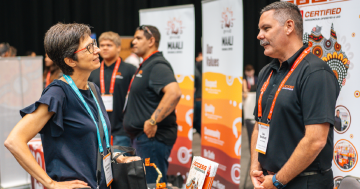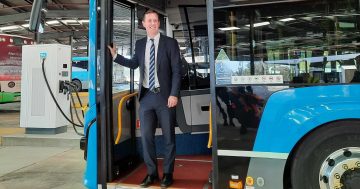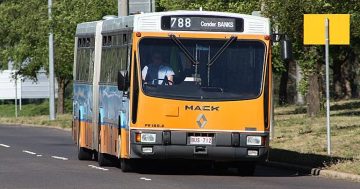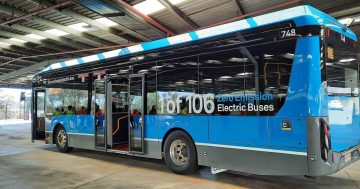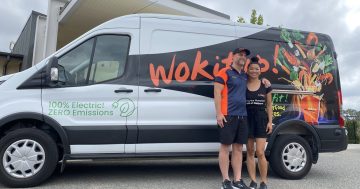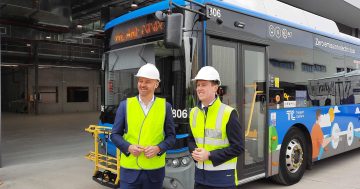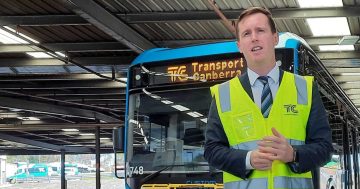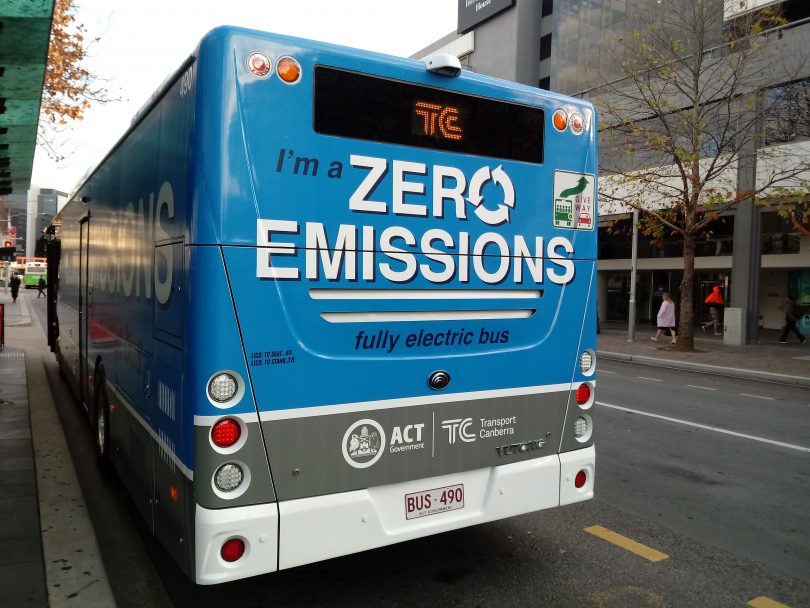
The Chinese-built Yutong electric bus being trialled in Canberra at the Civic interchange. Photo: Ian Bushnell.
A Transport Canberra transition plan to zero-emission buses will be handed down in August, and the Chinese-made electric vehicle now being trialled is likely to be in the mix.
The Yutong Electric E12 bus was rolled out last November and has been running all over Canberra to more favourable reviews than the previous electric bus trialled in the ACT which had reliability issues.
Transport Minister Chris Steel today provided an update on the trial, reporting that the Yutong bus had so far covered 4600 kilometres and completed 400 hours of service, travelling between 160km and 400km per day. Charging time varies between one and seven hours depending on the state of charge at the end of each day.
”The feedback from drivers is that it’s very comfortable and smooth to drive and very quiet,” Mr Steel said.
It is based at the Tuggeranong depot for charging but the new Woden depot being constructed and due to come online next year will be able to support a large fleet of electric vehicles if electric buses are the preferred model recommended by the steering committee.
He said a zero-emissions steering group is working on the transition plan, which will decide on the mix of technologies required, including how many electric buses should be acquired in the short term with the infrastructure already available in the ACT, as well as the infrastructure required to support an entire fleet.
There is funding for 84 new buses over the next three years, but by 2025 diesel will not be an option.
The government expects the transition to be complete by 2040 to help meet the ACT’s zero-emissions goals.
”We’re looking forward to replacing every single bus in the ACT with a zero-emissions bus,” Mr Steel said.
The transition plan will also determine the skills needed to operate and maintain the fleet of buses here in Canberra, including training diesel mechanics to work on electric vehicles.
Mr Steel said running an electric fleet would be cheaper in the long term, and the unit costs were coming down over time.
The ACT has paid $122,000 to trial the Yutong, which has a range of 400 km, with options to extend the lease or buy at the end of the 12 month trial.
Mr Steel said Yutong was the world’s biggest bus maker and there were 16,000 Yutong electric buses running in Shenzhen.
”There are huge numbers of these buses being produced,” he said. ”There is no excuse for governments not to be thinking about transitioning their fleets to electric vehicles to reduce carbon emissions.”
He said using electric buses would also mean cleaner air, with diesel fumes and their dangerous particulates no longer being emitted into the atmosphere.
The steering group comprises former ACT Minister for Climate Change and Transport Simon Corbell, Dr Lachlan Blackhall from the Australian National University, Professor Peter Newman from Curtin University, and John Stewart from the Australian Manufacturing Workers Union.











